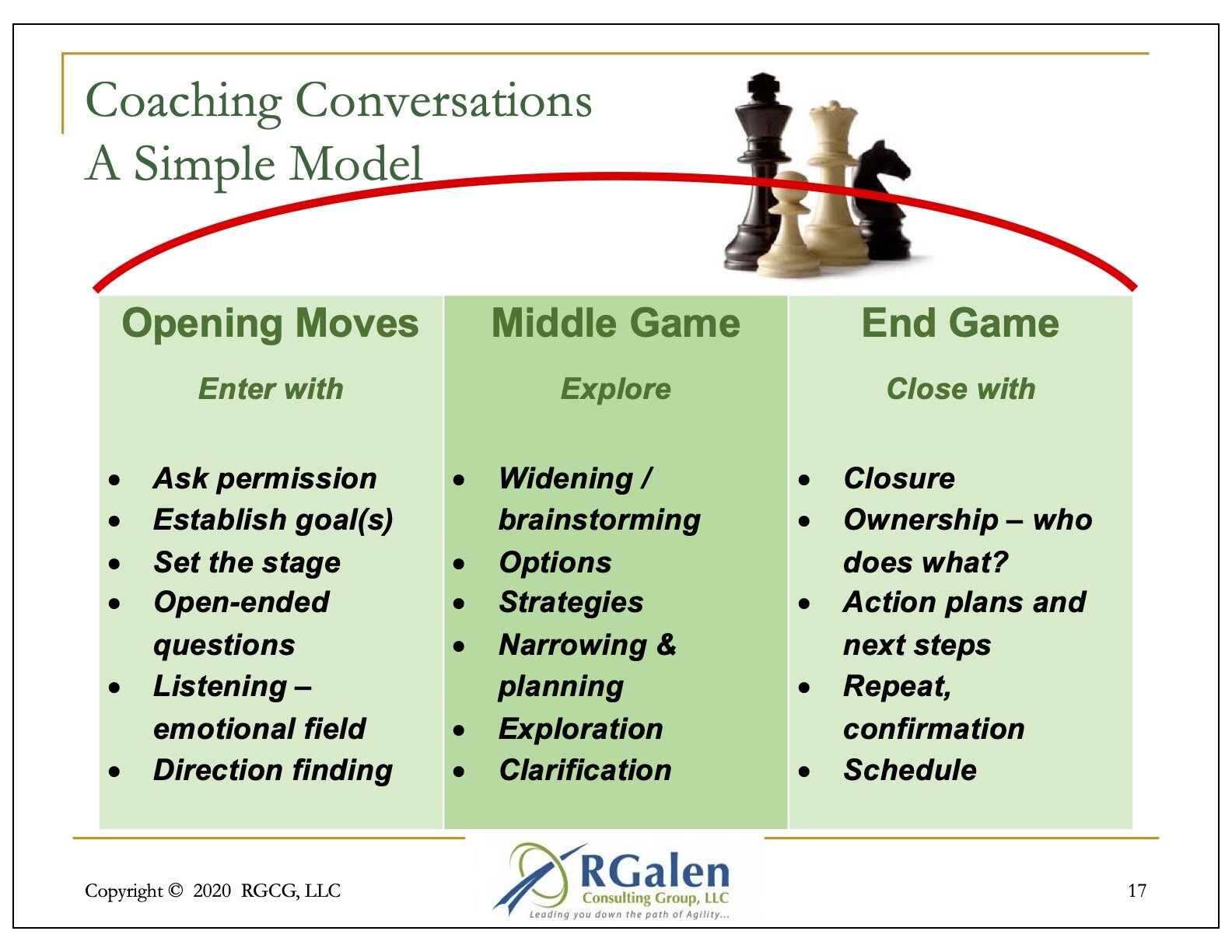Introduction
First of all, this isn’t necessarily something I’ve learned from ORSC. Nor is it something I’ve formally learned from agile coach training. It’s more so something that I’ve been using in more than a decade of agile coaching.
I find it useful to think of any coaching engagement as a series of ARCs. That is,
there is an overarching ARC for the entire coaching engagement. You could call it our goals, contract, agreement, outcomes, etc.
underneath that overarching ARC, there are mini-ARCs for each coaching session.
The metaphor serves to remind me of several things—
Coaching is interconnected with the individuals/groups you are coaching and with the entire system.
That coaching is more of an ongoing flow of events rather than individual coaching sessions with a specific outcome.
The shape of the ARC reminds me to open/close each session well. In particular, landing it well.
It helps me when I’m planning my coaching—with goals equating to a series of possible ARCs.
Components of an ARC
This chapter seems to be more metaphor focused, so I have another for you. I use it for storytelling, crucial conversations, and coaching conversations. It’s a chess metaphor of opening moves, middle game, and endgame. I think it equally applies to the ARC of a coaching conversation.
Opening Moves
This is how you enter the coaching relationship. If it’s the larger ARC, then you’ll be establishing coaching plan, goals, alignment, a DCA, and other elements of an effective start.
If you’re simply entering a singular coaching conversation (ARC), then you’ll want to establish a goal for just this session.
I personally like an outcome-focused session, where we establish what the outcome / goal would be for this session (time
Middle Game
This is the central part of the coaching conversation. If you’re using ORSC tools, then this is the place to explore one of them.
There is a Divergent & Convergent quality to effective middle games. In that, you’ll want to create the opportunity for exploration and discovery. Another way to think of it as exposing options. But at some point, you’ll want to move the client from exploring (divergence) to decisions (convergence).
The middle game is the place for listening intently (actively, deeply) to your coaching client. Paying attention to the emotional field, providing opportunities for ventilation, listening to/for signals, and just staying present.
End Game
The endgame is largely for landing the coaching conversation and achieving some closure on your coaching plan / goals.
It’s a place to review the discovery in the coaching ARC. Reviewing it if you will.
It’s a place to checkpoint whether the clients goals were met?
And finally, it’s a place to discuss potential next steps.


